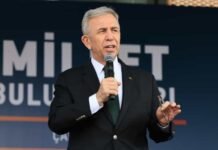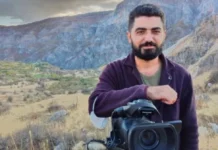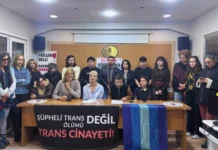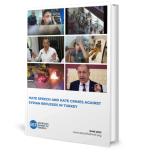Pro-Kurdish Fırat news agency (ANF), which is affiliated with the outlawed Kurdistan Workers’ Party (PKK), has released alleged new details about Paris killings on Friday and claimed that the execution order had been given by four administrators of the Turkey’s National Intelligence Organization (MİT).
On January 9, 2013, the outlawed PKK’s founding member Sakine Cansız, Kurdistan Information Bureau (KNK) Paris representative Fidan Doğan and Leyla Söylemez, who was a member of Kurdish youth movement, were assassinated in their Paris bureau. Suspect Ömer Güney died in prison on Dec. 17, 2016, just a few weeks before the trial.
The trial was planned to start on Jan. 23, 2017 in Paris High Criminal Court. However, the case was closed over Güney’s demise under suspicious circumstances. The probe into the murder of three Kurdish women in Paris has reopened later upon the appeal of lawyers.
“The massacre had reportedly come just a few days after an initiative to launch a new process of peace between Turkish government and the PKK. The process that was later dubbed the Imralı talks was just beginning. Before them, there had been the Oslo talks,” wrote the ANF.
“On January 3, 2013, a civilian committee had visited the Imralı island for the first time. Six days later, the bloody massacre in Paris occurred. The assassin was working for the MİT. He was a hitman, and was the only suspect under arrest. All signs he left behind were pointing to Ankara. The National Intelligence Agency, MİT, to be exact,” added it.
According to the report by ANF, “The MİT was there in the address he gave in code as he was planning his escape from prison. During the investigation, many other pieces of information were leaked. From a document that was leaked to the press on January 14, 2014, it could be understood that the execution order had been given by 4 administrators in the Turkish intelligence agency. Turkish intelligence claimed this document wasn’t genuine, but the document did have a wet-ink signature, and was included as evidence in the investigation file. Turkish officials refused to cooperate.”
“The document dated November 18, 2012 was signed by MİT officials Yüret, U.K. Ayık, S. Asal and H. Özcan. A document signed by MİT administrators showed that murder suspect Ömer Güney had been sent 6,000 Euros for ‘possible expenses’ and ordered to assassinate Sakine Cansız,” wrote ANF.
The document was saying: “In his last visit to our country to meet with us, the source was ordered to make preparations for people determined in the context of attacks/sabotages/assassinations against the organization targets in Europe and other such operative possibilities/capabilities, to acquire necessary equipment for his efforts, and to take maximum care in all communication with us, and has been paid 6.000 Euros for possible expenses.”
ANF’s report has continued to give details of assassination plan as follow:
“In a voice recording leaked to the press around the same time, Ömer Güney was speaking with unidentified MİT members to plan the murders. The date was January 12, 2014. The voice that was determined to belong to Ömer Güney was talking about assassination plans against Kurdish administrators. The two other voices in the recording were determined to be MİT members.
“The ‘final meeting’ that assassination plans were made according to documents and voice recordings was by early October, coinciding with Ömer Güney’s visit to Turkey. After Güney infiltrated Kurdish associations, he made many secret visits to İstanbul and Ankara. In the indictment, these visits were listed one by one with dates and times.
“The suspect had Sakine Cansız and many other Kurdish representatives in his crosshairs. The time when documents and voice recordings were leaked was also when Güney was planning his escape from prison. The murder suspect was planning to procure guns through his cohorts on the outside, and escape during his stay in the Salpêtrière Hospital in Paris.
“Years later, on December 17, 2016, the news of his death came from the same hospital. The case was expected to start that same month, but for some not fully explained reason, it got postponed to January 23.
“Later allegations were made that the massacre was planned during the Oslo and Imralı meetings, even that the members of the state committee in the talks were among the plotters. Kurdish journalist Amed Dicle’s book titled “2005-2015 Turkey-PKK Talks: ‘Resolution process operation’ against the Kurdish question’s resolution” pointed out that the order of execution was given during the Oslo meetings.
“The book also pointed out that the MİT members in the voice recording leaked on January 2014 were in the state committee that went to Oslo to meet with the PKK. The man mentioned in the book is code named Ozan, whose true identity hasn’t been confirmed, but is posed as a MİT administrator and was present in all meetings, from the first meeting in Geneva on July 5, 2008 to the last one in Oslo on July 5, 2011.
“According to Dicle, many people present in the Oslo meetings believe it was this MİT administrator code named Ozan in the voice recordings. The man in question was next to MİT Undersecretary Hakan Fidan in the Oslo meetings.
“New information that has surfaced months later confirm the previous. On the fifth anniversary of the massacre, On January 3, The outlawed Kurdistan Communities Union (KCK), an umbrella organization that encompasses the outlawed PKK, issued a statement on the massacre, which also coincided with the fifth anniversary of the first committee visiting Imralı in 2013.
“With the information the KCK shared regarding the two high ranking MİT officials captured in August 2017, they exposed the name of the man who planned the Paris massacre: Sabahattin Asal. According to the KCK statement, he participated in the Imrali meetings in the name of the state along with Muhammed Dervişoğlu.”
The ANF report has stated that Asal is a MİT administrator. One of the four signatures on the confidential document dated November 18, 2012 leaked in January 2014 belonged to S. Asal. This name announced by the KCK matching the name on the document and the same man participating in the Imralı meetings show that the Turkish government’s role in the Paris killings.
















